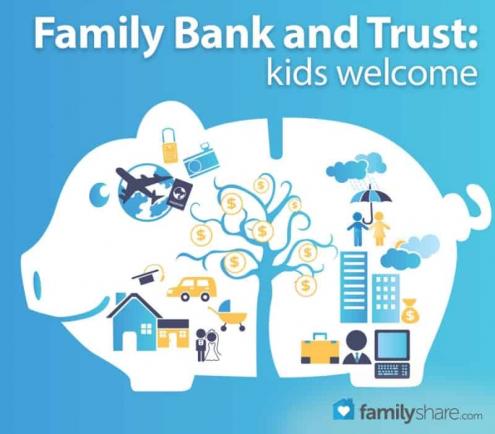
Gayle was worth over 4 million dollars by the time she was 34 years old: true story. Not only that, but she owned several houses. How did she do it? Gayle said:
"I was raised by parents who did not know how to handle money. They spent every penny they ever had. I decided I did not want to be like that. So when I was 12, I began doing little jobs and saved every penny I could. I bought my first house when I was 17. And I had to buy it in my parents' name because I was not old enough legally to own a home. My parents didn't even own their home. I have saved and saved my money. In fact, my parents live in one of my homes now."
Gayle's story is true. She is the real-deal-the kind of Great Saver who is rare today. So how can we teach our children to save even half as well a Gayle did?
One of the most neglected areas of instruction for finances is savings. Perhaps if more children were educated on this issue alone, a host of ills from credit problems to bankruptcy and divorce would be avoided. In fact, through teaching our children about savings, we greatly improved our own habits and it is a great blessing to the family.
When to teach savings
When to begin teaching about savings? Age 5 is a great time. At that age, children are typically learning about money concepts and beginning to understand values. Parents give them an allowance and then teach them about saving. The parent can then talk about how they may only get $8 but if they save it for three months -�then what could they get? They get really excited about that when they think of the cool BIG toy they could get all on their own.
From age 5 on, set up a series of teaching and training opportunities for the children to learn about saving.
Pay yourself 10 percent first
Begin by having them save 10 percent of their allowance. In fact, this habit should continue throughout their life. It's a great mindset to have - pay yourself 10 percent.
It's a fantastic habit for them to get into and it's not painful when that's only eighty cents. In fact, it's great to show them actuarial tables that show if they save 10 percent their whole lives, they will end up millionaires. That is highly motivational.
Set savings goals
Next, have them set up a goal for saving. They may decide to save up for a bicycle. As they save and save, encourage them to reach their goal. When they do, it is cause for great celebration. They will take good care of their bike and appreciate it a whole lot more because they saved and paid for it on their own.
Prime the pump
Another way to assist in the teaching of savings is by priming the pump. Sometimes children just don't see the benefit of savings and you can see that. Saving twenty cents a week sure doesn't seem like a big deal or that they will ever reach their savings goal.
Parents can add a few incentives to make this more attractive to get them into the habit. This can be done through a Family Bank. (You can name your fictitious "Family Bank"� after your own family. Call it the Bank of Sanchez or the Bank of Miller or whatever your name is.)
The Family Bank offers some great savings rates. Frankly, the thought of saving a dollar a month and getting a measly 1 percent interest doesn't sound all that exciting. So the Family Bank can offer much higher rates to make savings look much more enticing. The Bank offers a 10 percent bonus upon goal. So if the goal is $100, they get $10 bonus from the parents when they hit their goal. Ten bucks is a lot of money and that sounds a lot more appealing than merely a buck.
Use a savings calculator to have your kids calculate how much they'll have if they save over time.
Matching Savings
The Family Bank can also offer matched savings. For certain items, parents can match dollar for dollar what they save. Now THAT's attractive! These plans really help the child get excited about saving.
Are they unrealistic? Sure. But it does several things. It teaches the child to save. It teaches them about interest earnings (albeit on a slightly inflated scale). It teaches them to postpone gratification - rather than running out and spending it all on candy, they can wait for something important.
It also teaches them the Bit-by-Bit Principle which is invaluable. That is that savings accumulates over time. Many people never learn this lesson and are impatient and looking for a quick get-rich-quick scheme. The Bit-by-Bit Principle is one of the most important lessons an adult can know. These are the ones who end up millionaires.
Bottom line, we want to make saving the most delicious, exciting thing we can for our children. That way, they will learn to love it and it will be a life-long habit.
Savings takes practice. What better place to start than when you're young? So take your children to the bank and open up their own savings account. Then have them open an account with your Family Bank as well. And teach them that savings and interest pays!

